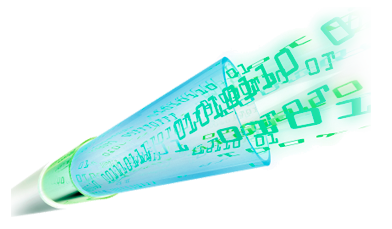DSS Bus
Digital Speaker System Bus
The digital speaker system bus (DSS bus) replaces speaker lines known from 100 V systems. It feeds the connected components, e.g. integrated amplifiers and powered speakers with power, as well as digital audio signals and bidirectional control data in real time via one single standard CAT5 or J-Y(ST)Y cable.
The DSS bus combines central network structures with a bus architecture, saving on cabling and wiring time and eliminating the need for additional hubs and routers even for the largest networks. 
The DSS bus provides
- 8 digital audio channels
- Control data
- Module monitoring
- Power supply
The DSS bus offers the following functions:
- Distribution of synchronous audio data to the DSS Bus modules (unidirectional data flow)
- Distribution of control data to and from DSS Bus modules (bidirectional data exchange)
- Distribution of electrical power (48V) to all connected DSS bus modules
The DSS bus uses
- Standard CAT5 or
- Typical 2-twisted pair installation cables such as J-Y(ST)Y
Characteristics of a Digital Audio Bus
- No significant quality loss (CD quality)
- Audio and control data at the same time
- Several audio channels at the same time
- Cross large distances over fiber optic
- Real time monitoring of lines and loudspeakers
- Standard cabling
- Easy to install
- Free design of zones independent from speaker runs
- Change of zones without any rewiring